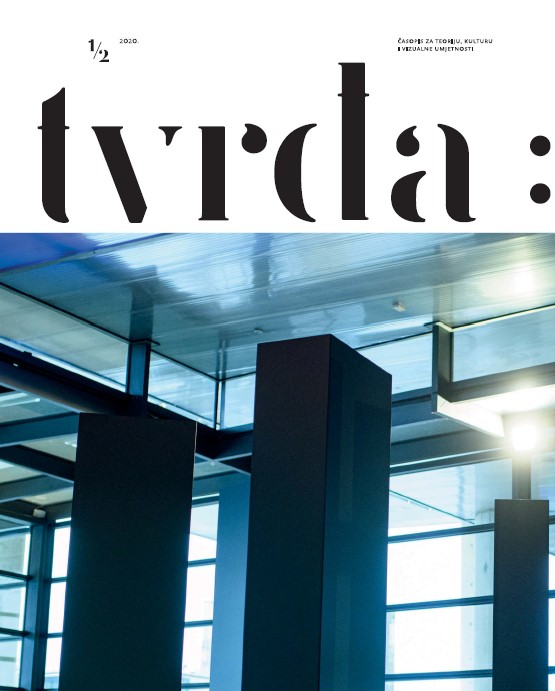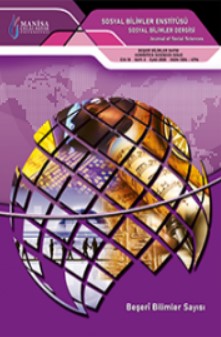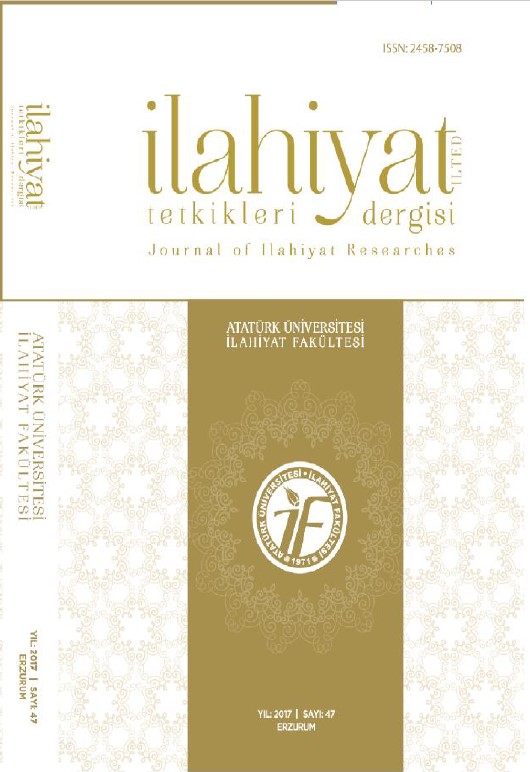
We kindly inform you that, as long as the subject affiliation of our 300.000+ articles is in progress, you might get unsufficient or no results on your third level or second level search. In this case, please broaden your search criteria.


TO ANNIVERSARY OF H.-G. GADAMER (1900) AND HIS OPUS MAGNUM “TRUTH AND METHOD” (1960)
More...
The subject of this article is the debate of Gadamer and Habermas about the nature of critical thinking,the relationship between freedom and authority, the individual and traditions, documented in the book Hermeneutics and Criticism of Ideology (1971). Central to the author is the question: “What understanding of critical thinking would allow us to gain a higher degree of resistance to ideology?”The author consistently solves several problems. First, the author clarifies the meaning and significance of the key concepts of “ideology” and “criticism” in the critical theory of Frankfurt School and philosophical hermeneutics. Thanks to these explanations, becomes clear the basis for the possibility of a productive polemic between philosophical hermeneutics and critical theory. Secondly, in the analysis of the main lines of criticism by Habermas against the hermeneutical project of Gadamer, the author explicates the strengths and weaknesses in the argumentation of the opposing parties. The focus here is the problem of the relationship of critical reflection with prejudice, authority and tradition, the problem of theoretical maturity and methodological support of hermeneutics, the problem of forming abasic consensus of understanding and interaction. Based on a comparative analysis of the arguments and counterarguments of Gadamer and Habermas, the author shows the non-trivial nature of critical thinking and reveals new aspects in understanding the concept of criticism of ideology. The result of the comparative analysis is the idea of an integrative concept of ideology criticism, which allows productive use of the strengths of the critical and hermeneutic approaches, and thereby provide a higher resistance to ideology at the collective and individual levels.
More...
This is a Russian translation of the first of Phenomenological Meditations of Marc Richir. The text consists of two sections. In the first section, Richir develops Husserl’s remark on “movement in a zigzag pattern” and makes a distinction between the logical structure of phenomenology and the symbolic systems of the German idealism. The sphere of the phenomenological is not given from the very beginning;phenomena have essential indeterminacy which cannot be clarified in “one go.” In the second section, Richir analyses the distinction between the symbolic and phenomenological layers of sense,and offers a new version of phenomenological hermeneutics.
More...
Čovjekova sposobnost posvjedočenja moguća je i dosljedna tek kada udovolji ulozi posvjedočenja kao načina opstanka. Posvjedočenje poznaje više modusa što ih je, s literarne točke motrišta, najlakše odrediti kao kontekste. No posvjedočenje pokazuje da nije svaki modus određen kontekstom, nego da može biti i bez konteksta, jer se vezuje uz smisao, a ne uz kontekst. Budući da smo svjedoka odredili kao člana sklopa svjedočenja, postavlja nam se pitanje možemo li za svjedoka još reći da spada u neki kontekst.
More...
This paper provides a comprehensive and systematic inquiry on the central problem of contemporary philosophical hermeneutics, the question of understanding. The strain of thoughts starts by the critique of the methodological concept of understanding, as it was worked out in romantic hermeneutics and in social sciences. This is proceeded by a touch upon the approach of fundamental ontology, the Heideggerian concept of existential understanding. The study continues with a detailed exposition of the hermeneutical understanding-concept. This incorporates the scaling of hermeneutical experience as the nexus of negativity, openness, finitude and historicity, the connections of the hermeneutical situation and horizon, the development of the anticipatory- and question-structure of this experience. The study concludes with the presentation of understanding as a process of the tradition of questioning.
More...
The article “Tenderness: Outlining the Anthropological Perspective of Femininity” is written from the point of view of Philosophical Anthropology and outlines the outlines tenderness as particular feature which characterizes femininity and a special way of communicating the truth. In the hermeneutical reading of the story of Creation in Genesis and Plato’s “Symposium” the author shows that image of original unity of man and woman is deeply rooted in human nature. In the reading of John Paul II’s Apostolic letter “Mulieris dignitatem” tenderness of femininity is featured as divine gift. Article examines how the lack of tenderness deprives the sacredness from sexual relations causing alienation. Following the idea of French philosopher Ricoeur it claims that returning the sacred force to sexuality it becomes penetrated by the reciprocity of gift, so that self-centred eroticism is transformed with tenderness and sacredness of mystery of Love.
More...
Surah Al-’Ādijāt is the hundredth surah of the Qur’an; it has eleven ayats and was revealed in Makah. The main theme of the surah is the causes of destruction of ungrateful man, and the main cause given there is his negation of the Akhirah. This is, in short, the content of the second part of the surah Al-’Ādijāt, whereas the first part, its ayahs 1-5, present one impressive worldly scene- a battle cavalry in the midst of its evening gallop and its sudden, early morning intrusion unto the territory of another tribe. This war scene was not unfamiliar to the Arabs at the time of the revelation of the Qur’an, it was deeply engraved in their consciousness almost as a daily routine. The Qur’an here refers to this particular state, what more it is pointing it out as an argument against human ingratitude. The question arises how to bring the first and the second part of this surah into logical and semantic unity? Why is it, that the surah begins with a dramatic battle image and ends in an illustration of resurrection? The author here attempts to answer these questions in his interpretation (tafsir) of the surah Al-’Ādijāt.
More...
This article elucidates the meaning of intelligence in machines. It employs hermeneutic-phenomenology and cybernetics. Its point of departure is Melanie Mitchell’s Artificial Intelligence: A Guide for Thinking Humans (2019). It (1) reviews the different types of machine intelligence (MI) Mitchell describes and the understanding of intelligence she suggests is common among MI researchers and developers, (2) hermeneutic-phenomenologically exhibits the intelligence of Da-sein (t/here-being, human being as such), (3) discerns the intelligence of machines cybernetically in contrast to the intelligence of Da-sein rendered hermeneutic-phenomenologically, and (4) assesses the MI industry’s goal of producing ‘general human-level’ intelligence in machines.
More...
One of the most intriguing constellations in the German philosophy of the first part of the 20th century is the relations between Dilthey, Husserl, Heidegger, and Georg Misch. Misch began his career as Dilthey’s pupil and an influential professor in Göttingen, staying in contact with the today much better-known thinkers in various ways. Due to the Nazi regime, his philosophical activity was confined to the years before 1933, afterwards he elaborated on and published the volumes of his monumental History of Autobiography. His philosophical work is interesting today mostly for the profound way of his struggling with the principles of the innovative philosophies of Husserl and Hedegger, with no chance to work out his own philosophy, being and remaining too much in the shadow of Dilthey. In my paper I follow the development of their relationship from the 1911 correspondence between Dilthey and Husserl until that between Misch and Husserl, viz. Heidegger, after the publication of Misch’s Lebensphilosophie und Phänomenologie.
More...
Cette étude aborde une conception de la temporalité scripturale typique du moment des avant-gardes littéraires des années 1960 et 1970 en France, emblématisée par cette formule : « écrire pour savoir pour/quoi écrire ». Elle en examine certaines conditions historiques de genèse et en esquisse quelques implications contemporaines. The essay evokes a conception of scriptural temporality typical of the literary avant-gardes of the 1960s and 1970s in France, symbolized by this formula: “write to know why/what to write for”. It examines some historical conditions of its genesis and outlines some contemporay consequences.
More...
The subject treated in this paper is recitation of the Qur'an opposite to the disposition of surahs in the Mushaf, and the sharia status of such recitation. This way of reciting the Qur'an in the Qur'anic studies terminology is called qira'etu 'l-Qur'ani bi 't-tenkis. The term tenkis could refer to reciting the Qur'anic surahs (chapters) in an order opposite to their order in the Mushaf, but it could also refer to reciting Qur'anic (Arabic) letters, words and verses in reverted order, resulting in a distortion of the Qur'anic text. This paper aims to present the oppinions of Muslim scholars about the Shariah status of these ways of reciting the Qur'an. Their views on this issue are closely related to their understanding of the nature of the arrangement of the Qur'anic verses within the surahs (chapters) as well as the order of the surahs in the Mushaf, i.e. whether this particular order/disposition was established in connection with the Revelation (tewkifi) or relies on free thinking (ijtihad) of the companions of the Prophet (sahaba).
More...
The author on the basis of study Madrasah al-tafsir fi al- Andalus, by Mustafe Ibrahim al-Mushini and his own insights, summarises the main tafsir orientations of Andalus commentators of the Qur’an. He then examines tafsir impacts that these commentator's suffered from tire commentators from tire East and their impact on each other. Through tire undoubted fact of Andalus commentators tafsir originality and through comparative presentation of their views and tire views of commentators from tire East, the author exposes some of basic features of the school of tafsir in Andalus.
More...
The stories, which are one of the miraculous aspects of the Quran, are the events that have been conveyed to us by the word of Allah, lived in the past or are likely to be experienced. With these stories, Allah is aiming both the proof of the revelation and prophethood to the interlocutors of all revelations and to receive a warning, lessons and advice from the past experiences. Undoubtedly, the stories of the Quran have a clear response/answer on the floor of the first interlocutors of the revelation. The thing that falls to modern people is to be able to infer from general, moral and philosophical meanings that can appeal to all times from the same stories. The miracles that occur around the stories are conveyed to the literature as follows: Miracles are extraordinary events was created in the hands of those who claim to be prophets and the peoples are unable to create a similar one. One of the important issues related to the stories and miracles in the Qur'an is the question of whether they can be evaluated with criteria such as cause-effect, causality, simplicity, measurability, impartiality and compliance with historical chronology. The purpose of our article is to point out that the stories and miracles in the Quran can be evaluated within mentally and the framework of the criteria we have contacted above. So, It will be possible to create universal principles from them.
More...
It is declared in Quran that some actions nullify (cancel out) good deeds. These actions are dealt through ‘Habtu’l-a’mal / İhbâtu’l-a’mal’ format in Quran verses. The common basic point emphasized in these verses is the case that good deeds are removed with bad deeds. In this article, the answers to the following questions will be sought: What are good deeds and bad deeds? What’s the character of their nullification? Which actions nullify good deeds? Are these deeds nullified in this life or in the afterlife?
More...
After the codification of Islamic sciences, an hierarchy was tried to be established among them. For the science of tafsīr among these sciences, studies on the Qur’ān in order to reveal the divine intention, some of the problems of tafsīr, even if they are in the later sources, had been taken into consideration. Among the sources, in which these issues related to tafsīr were discussed and examined, al-Baydāwī’s tafsīr Anwār al-Tanzīl plays an important role. Because the sharhs and hāshiyahs on this tafsīr reveal its effect on the literature to come. Al-Baydāwī presents tafsīr as the supreme of sciences in his introduction to tafsīr, he then subsequently accepts it as the origin of the Islamic sciences since it forms the basis of the religious codes; but on the other hand, he estipulates a competency in religious and literary sciences, in order to be able to conduct a tafsīr. In the sharhs and hāshiyahs, depending on these judgments how tafsīr is a superior science than others, and the problem of superiority of tafsīr over kalam and hadith were specially discussed. In addition to these, the problems of tafsīr ranking higher than other Islamic sciences due to its forming the basis for these sciences, and the acceptance of tafsīr as a latter knowledge as it can only be done with the help of these other sciences were discussed. This article aims to examine the aforementioned problems.
More...
This article is about the evaluation of the asbāb al-nuzūl in the context of whether the Qur’an is eternal or not. In the study, it is aimed to determine how the role given to the asbāb al-nuzūl in the shaping of verses differs according to the conceptions of the Qur’an by modern thinkers. According to the contemporary authors who do not accept the eternal Qur’an conception, sabab/reason used in the completion of asbāb al-nuzūl means the condition, which means that the existence of the verse depends on the reason. According to those who have the eternal Qur’an conception, sabab/reason means correlation/ relation. For this reason, it is not the existence of the verse, but only the relation for its revelation. According to those who accept the eternity of the Qur’an, since there is already a complete and last prototype of the Quran in al-Lawh al-Mahfūz, the event and the revelation of the verse are interpreted as a coincidence by the divine will. On the other hand, according to those who oppose this concept, there is no explanation for the existence of verses that mention them before the events of the nuzūl period occurred. For, the acceptance of the existence of those verses before the events that caused the revelation of the verses abolishes human freedom and causes the period of nuzūl to become a mandatory history.
More...
Allah describes his personality with many different attributes in the Quran. It is possible for people to perceive Allah through these attributes. The subject of Allah's attributes is one of the issues that have been discussed since the early days of Islam. The subject of attributes that are related to many different issues such as destiny, will, the creation of the Qur'an, and the anthropomorphist deity imagination is basically discussed around whether certain attributes, which are called spiritual attributes, have any existence other than the essence of Allah. This debate mostly takes place between the Mu'tazila, which is the first representative of the Islamic Kalam, and the Ahl al-Sunnah sects. The basic view of attributes that Mu'tazila has since its formation is the view that attributes are inherent in Allah. The attribute view of Mu'tazila, in which the attributes are completely identical with the essence, was deemed flawed by Abu Hashim al-Jubbai, one of the leading subsequent representatives of the sect. For this reason, he put forward a new theory called the ahwal theory. Both Mu'tazila's basic attribute view and ahwal theory were intensely criticized by Ahl al-Sunnah. One of those who criticize the ahval theory widely is Ebu'l-Muin al-Nasafi. Ebu'l-Muin al-Nasafi is one of the most prominent scholars of Maturidi, one of the Ahl al-Sunnah creed sects. In fact, it would not be wrong to say that he was the person who ensured the formation of the sect because of his systematic understanding and defense of the views of Abu Mansur al-Maturidi, the founder of the Maturidism.
More...
Along with Sahîh-i Bukhari, many commentaries and memoirs have been made on Sahîh-i Muslim, which is accepted as the most reliable source of hadith and consists of sound narrations. Among the commentaries written today, the comprehensive commentary, which is a product of labor that cannot be ignored and stands out whit some features, is Ethiopian scholar Mohammed b. The commentary of Ali al-İtyubî’s (1947-2020) Sahîh-i Muslim commentary on al-Bahru’l-muhît and his holy book is Kurratü ayni’l-muhtâc. This article aims to briefly introduce İtyûbî with his educational life and Works, the method he followed in his annotations, the sources he used, his reports that do not require many works, his criticisms and evaluations, his perspective, his world of thought, and to reveal and evaluate his different approaches and ideas on certain subjects. Reaching 47 volumes together with the Commentary on the Muqaddima, the work has the feature of being the widest commentary of Sahîh-I Muslim. By transmitting the information in the previous works in a compact and collective manner, he did not leave the need to apply to them, and he made the hadiths easier to understand whit the memzuc method that explains word by word. The extensive interpretation of hadiths, the mention of different narrations, and the fact that the judgments derived from hadiths are regarded as material are some of the issues that make commentary important. This article aims to briefly introduce İtyûbî with his educational life and works, the method he followed in his commentaries, the resources he used, his transmissions that do not reguire many works, his criticisms and evaluations, his perspective, his world of thought, and to reveal and evaluate his different approaches and ideas on certain subjects.
More...